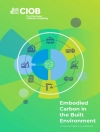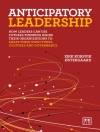Design and cultivate remote work teams that
actually
work.
From the experts who brought you The Long-Distance Leader and The Long-Distance Teammate comes the proven and practical guide for leaders to consciously design teams, define and create their desired culture, and encourage and nurture employee engagement-all from a distance.
Team design and culture are often presented as separate concepts when they are in fact intertwined in the remote work setting. Using the 3C model of communication, collaboration, and cohesion, leaders will be given the tools to overcome challenges, such as proximity bias and deteriorating social connections, to create an environment where everyone can contribute and add value equally, regardless of location.
The 3Cs are
Communication-While communication is a fundamental part of being human, it is also a critical foundation of successful work. Without it, teams break down.
Collaboration-Remote leaders face the misguided belief that physical presence is required to have a collaborative team. The truth is that proximity has nothing to do with successful collaboration.
Cohesion-This dimension includes decidedly nonstructural aspects, such as relationships, trust, and accountability. While difficult to measure, a team’s cohesion is critical to its success.
Using this framework, leaders of all levels will learn to assess, design, and develop their communication channels, methods for remote collaboration, and ability to foster cohesion to build successful long-distance teams. While a hybrid culture will be different, it can, when done right, be better than what existed before.
Daftar Isi
Introduction
Part 1: Getting Started Defining the Overused Terms
Chapter 1: Defining the Team. What does it mean to be on a team? What are the types of teams and how is all of that impacted on a long-distance (remote/hybrid/flexible) team.
Chapter 2: Defining Culture. Let’s get past the buzzword and talk about what culture really is and share some specific examples of why this matters so much.
Part 2: The Building Blocks
Chapter 3: Establishing Ownership. It’s time to recognize who the owners are – it may not be (only) who you think.
Chapter 4: Rethinking How We Work. It’s possible for long-distance/hybrid work to create better results than we’ve experienced in the past.
Chapter 5: Applying The 3C Model of Team and Culture Design. Let’s understand and apply the 3C model of long-distance team design (Communication, Cohesion and Collaboration)
Part 3: Designing for Success
Chapter 6: Designing a New Team. Time spent consciously designing a team is necessary for ultimate success. Here’s a process to help you do that reliably and effectively.
Chapter 7: Redesigning an Existing Team If your team has been operating at a distance and now you want to adjust, here’s how you can use the design principles to redesign your team.
Part 4: Creating Your Aspirational Culture
Chapter 8: Defining Your Aspirational Culture. How to use our framework to define and create the cultural description that everyone can get excited about.
Chapter 9: Building The Micro Inside the Macro. Your team culture needs to fit inside the organizational umbrella. Here’s how to create the alignment.
Chapter 10: Making the Culture Come to Life. Once the culture is defined, here’s how you start to create it.
Part 5: Applying Core Principles
Chapter 11: Applying the Power of Expectations. Using mutually clear expectations as a driver for your team design and culture.
Chapter 12: Creating Agreements. Your team design and culture ultimately will succeed of fail based on what the team agrees to do and how consistently they do it. Here is a process to create team agreements.
Chapter 13: Creating Engagement. Whether overtly stated in your aspirational culture or not, engagement is required for your team’s success. Let’s talk about what it really is, and how to nurture it.
Conclusion
Tentang Penulis
Wayne Turmel is the cofounder of the Remote Leadership Institute. He is the author or coauthor of fifteen books, including The Long-Distance Leader and The Long-Distance Teammate. He has been named to Remote Work Junkie’s Top 50 Remote Experts and Leaders to Follow multiple times.












